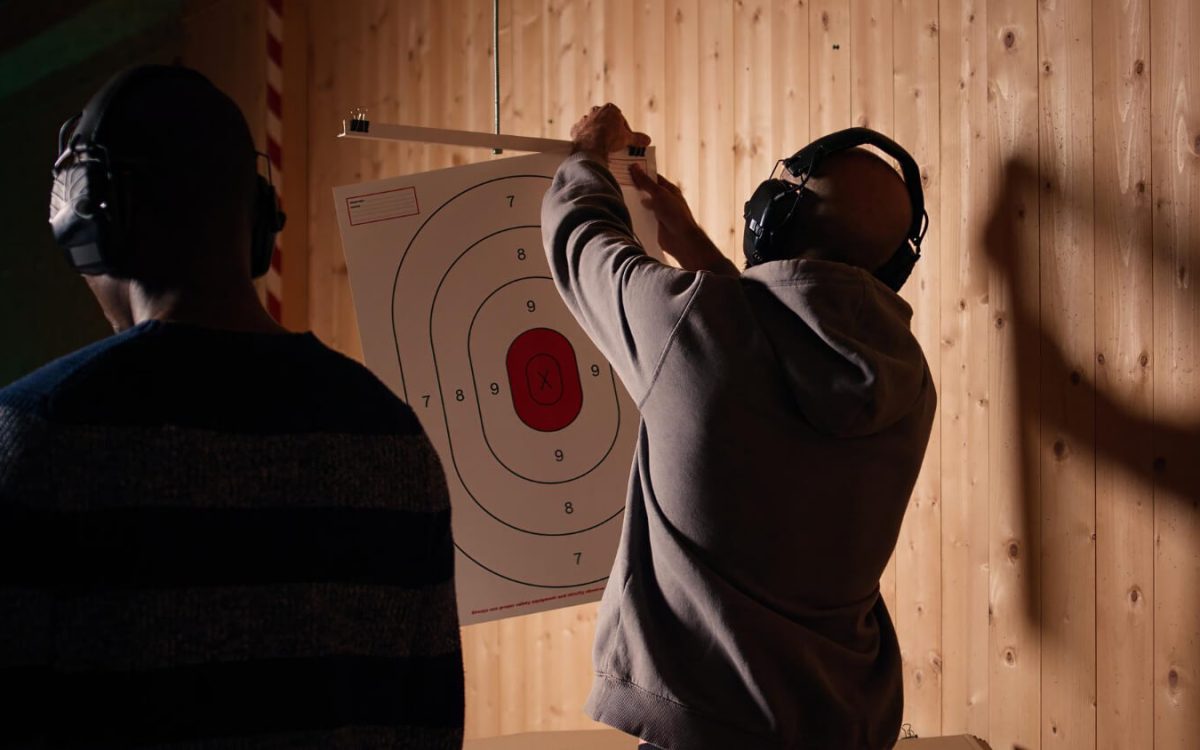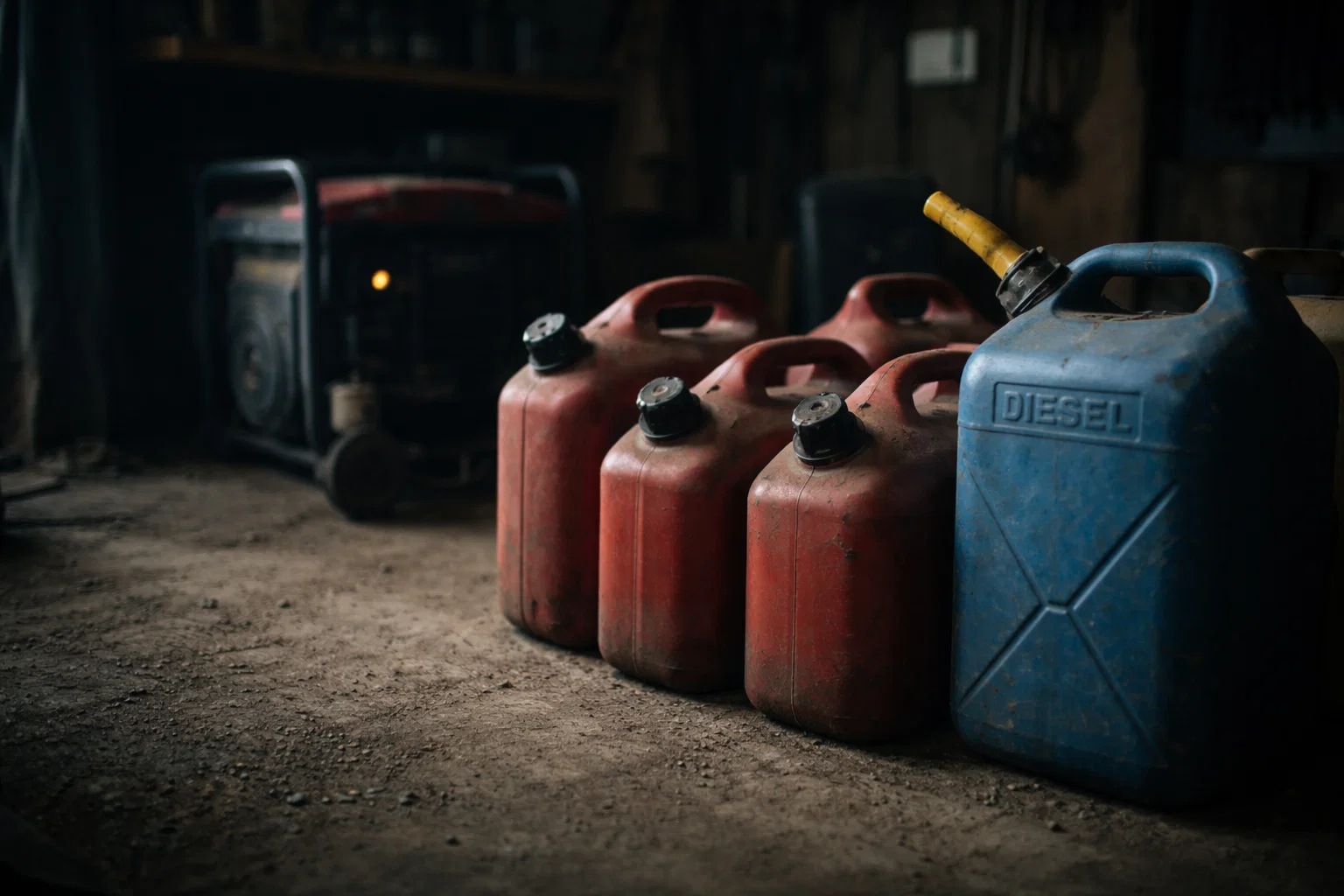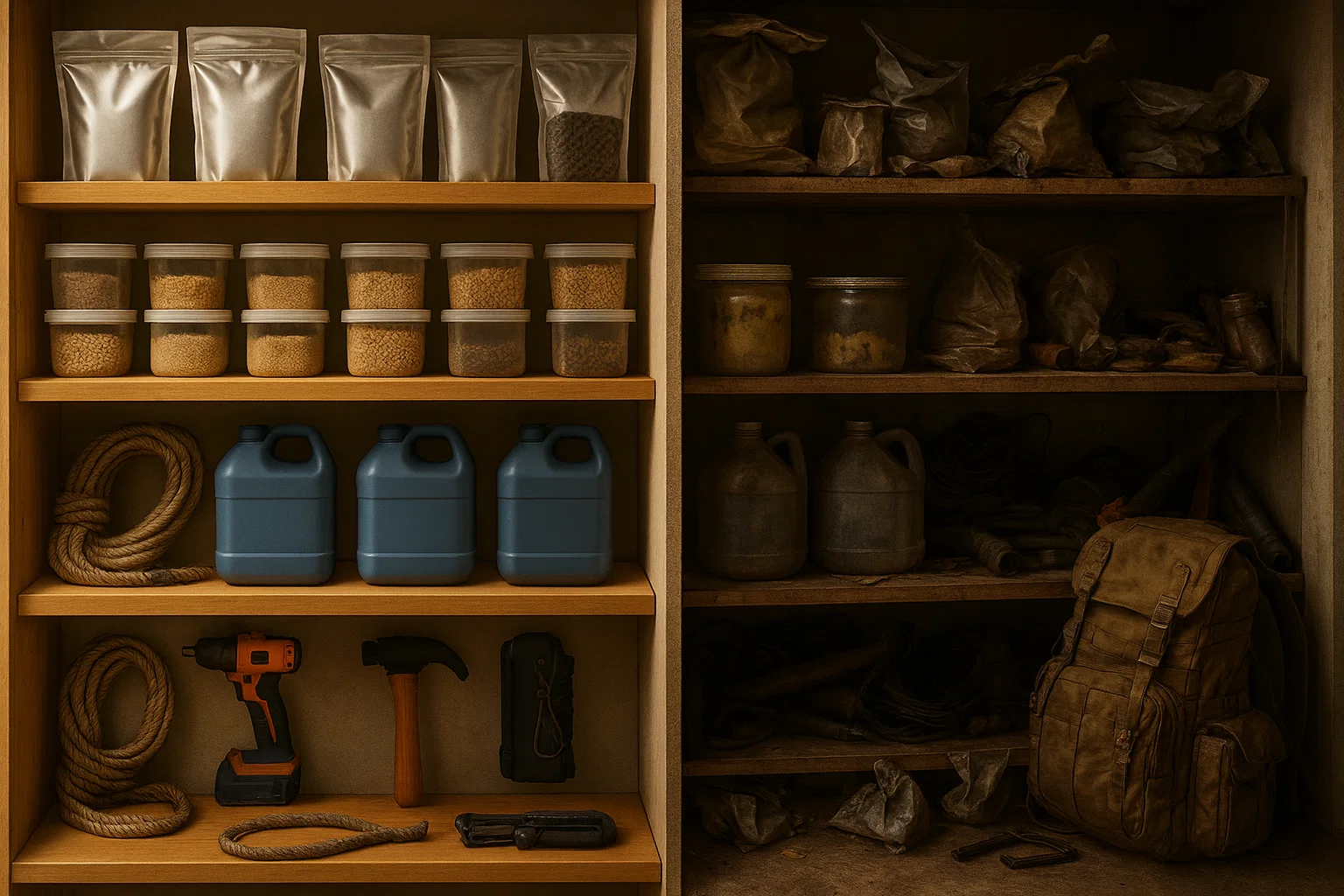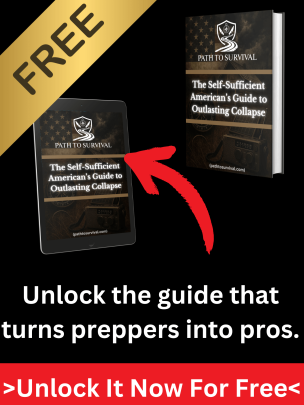You’ve probably noticed by now, ammo isn’t what it used to be. Prices have shot up, shelves go empty without warning, and when you do find rounds, it feels like you’re paying gold for brass. Whether it’s panic buying, supply chain breakdowns, or new regulations, one thing’s clear: ammo is no longer something you can afford to waste on casual range time.
But here’s the catch, you still need to train. Because when something goes south, the time to “get good” with your firearm is long gone. That’s where dry fire training without ammo comes in. It’s the smartest way to stay sharp, keep your skills tight, and stay ready without burning through your reserves. And the best part? You can do it right at home, without firing a single shot.
Why Live Fire Isn’t Always the Answer

A lot of folks still believe that the only way to get better with a firearm is by spending hours at the range, running through box after box of ammo. And while that kind of training has its place, it’s not the full picture, especially when ammo is expensive or hard to come by. The truth is, being a good shot on a sunny Saturday afternoon at the range doesn’t mean you’re ready for a real-world emergency.
Live fire practice helps you manage recoil and noise, sure, but it rarely trains for movement, quick decision-making, or the kind of muscle memory that kicks in under stress. In most defensive situations, you won’t be standing in a perfect stance with all the time in the world. You’ll be reacting fast, maybe in the dark, maybe with your heart pounding. That kind of readiness doesn’t come from just burning rounds. It comes from repetition, discipline, and being honest about what skills you’re actually building.
That’s where dry fire training without ammo becomes a game-changer. You can build real-world skills, drawing, reloading, sight picture, trigger control, all without firing a single shot. It doesn’t cost a dime, and it doesn’t require a trip to the range. It just takes consistency and a smart plan. If you’re serious about staying prepared, that kind of training is worth more than a pile of brass.
Dry Fire – The Smart Shooter’s Best Tool
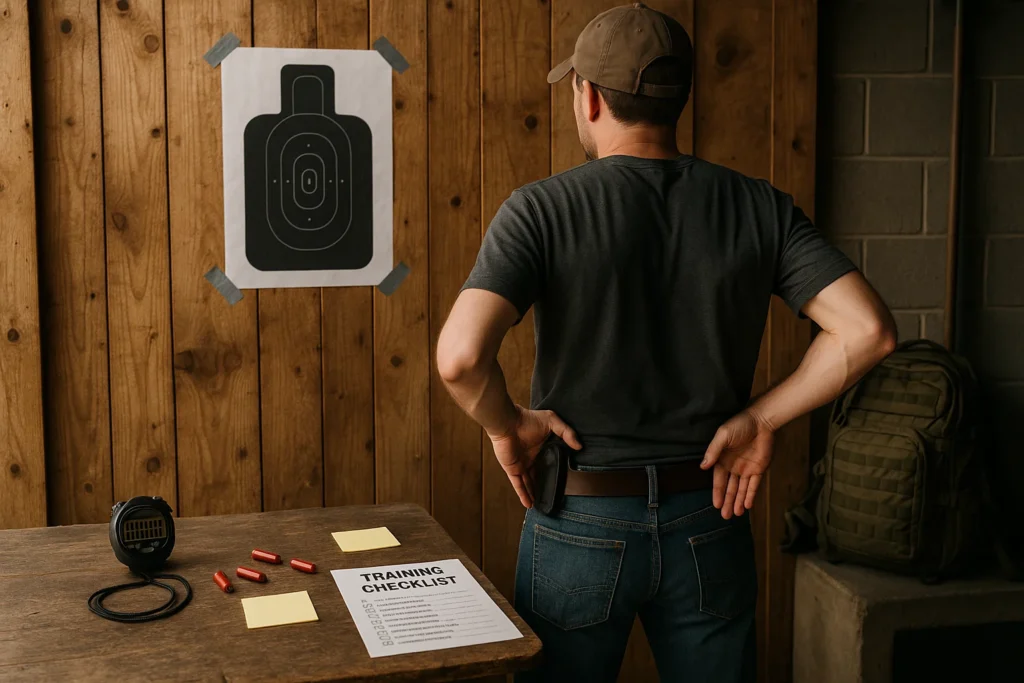
Dry fire is simple: you’re training with your firearm without using live ammo. No noise, no recoil, no brass flying out of the chamber, just pure skill work. But don’t let the simplicity fool you. Dry fire training without ammo is one of the most effective ways to sharpen your fundamentals. It lets you dial in your draw, improve your sight picture, and smooth out your trigger control, all without spending a single cent on ammunition.
That said, a lot of folks mess this up. They rush through drills, skip safety checks, or just treat it like a box to check off. One common mistake is squeezing the trigger while slapping the sights around, if you’re not aiming with intention, you’re just building bad habits. Another is not resetting the trigger properly, which means you’re not practicing the real mechanics of a follow-up shot. Dry fire should be slow, focused, and deliberate. Every rep should count.
The good news? Getting started at home is easy. First rule, clear your firearm completely. No live ammo in the room. Double-check the chamber, then check again. Set up a safe backstop, even if it’s just a blank wall with a taped-up target. From there, focus on slow, steady trigger pulls, clean sight alignment, and proper grip. You can even use a sticky note on the wall to simulate a target. It’s low-tech, but it works.
Spend just ten minutes a day doing this, and you’ll notice a difference fast. Your hands will move with more purpose. Your draw will feel smoother. And your trigger press will stop jerking your sights off target. That kind of muscle memory doesn’t come from blasting through a hundred rounds at the range, it comes from this kind of repetition. And when the time comes, your body won’t hesitate, it’ll just perform.
Try This Daily Dry Fire Routine (No Ammo Needed)
Spend just 10 minutes a day running through these steps:
- Check your gun is unloaded – triple-check. No ammo in the room. Safety first.
- Draw from your holster – practice your draw smoothly and deliberately.
- Acquire your sight picture – line up your sights quickly on a target (use a sticky note or dot on the wall).
- Slow trigger press – steady pull without disturbing your sight alignment.
- Reset and repeat – re-rack or reset your trigger if needed. Run 5–10 reps at a time.
Snap Caps – A Cheap Tool That Pays for Itself
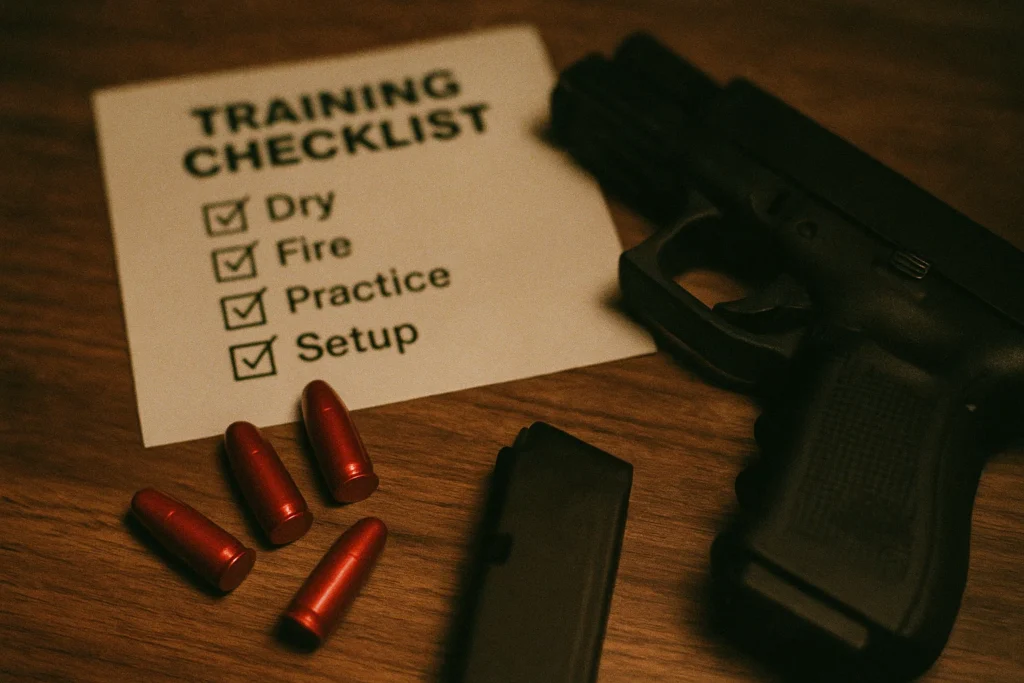
If you’re serious about training at home, snap caps are one of those no-brainer tools that every prepper should have. These are dummy rounds, basically inert cartridges made to cycle through your gun safely. They’re especially important if you’re working with a rimfire firearm, like a .22, since dry firing without a snap cap can actually damage the firing pin over time. Even for centerfire guns, snap caps add an extra layer of realism to your sessions, helping you build better habits without any risk.
One of the biggest benefits of using snap caps for pistol practice is the ability to run reload drills and malfunction clearing exercises that feel more like the real thing. You can practice magazine changes, simulate stovepipes, or even get a feel for the weight shift of a loaded gun, all without burning through your stash. And for trigger work, snap caps can help smooth out your press by letting you reset properly without any stress on the gun. They’re dirt cheap, but the training value they bring is hard to beat.
Go Tactical With Airsoft
A lot of folks hear the word “airsoft” and immediately picture backyard skirmishes between teenagers. But here’s the thing, tactical shooters, law enforcement, and even military trainers use airsoft for a reason: when you pick the right gear, it’s about as close to the real thing as you can get without going hot. We’re talking full-weight replicas that fit your holster, cycle like a real firearm, and let you train anywhere without the noise or cost of live rounds.
Gas blowback airsoft pistols are where it gets serious. These aren’t toys. They mimic the feel of your actual carry gun, the weight, the slide action, even a bit of simulated recoil. That means when you draw from your holster, pull the trigger, and reset for your next shot, your hands are doing the exact same work they would with your real setup. It’s the kind of muscle training that sticks.
With airsoft firearm training at home, you can run drills that would be tough to pull off anywhere else. Practice hallway room-clears. Work corners. Simulate cover-to-cover movement in your yard or garage. You’re not just learning how to shoot, you’re learning how to move, react, and handle your weapon like it matters. And all of it, without touching your actual ammo supply.
The Right Tools to Build Real Skill
You don’t need a high-tech setup to get better, but having a few smart tools on hand can take your dry fire training without ammo to the next level. A basic shot timer app can help you track your draw speed and reload time. Dummy mags give you smoother practice with mag changes. And laser trainers, like the ones that mimic a live shot when you pull the trigger, are great for working on sight alignment and precision without ever leaving the house.
If you want real feedback during your sessions, laser dry fire system drills are worth looking into. They show exactly where your shot would land, let you review your movement, and help you spot the habits that need fixing. Some systems even track progress over time, so you know whether you’re getting faster or just going through the motions. It’s all about getting better, not just getting reps, and these tools help you train with purpose while keeping every round in your stockpile untouched.
The truth is, becoming truly capable with your weapon has less to do with how many rounds you’ve fired, and more to do with how often you’ve trained with purpose. Ammo is great, but it’s not a crutch. If you rely on live fire alone, you’re missing out on the kind of discipline and preparedness that only comes from consistent, focused practice.
That’s why dry fire training without ammo should be a core part of every prepper’s routine. It’s not just a workaround for high prices, it’s a smart, lifelong habit that builds real skill. When things go sideways, it won’t be about how many range days you logged. It’ll be about whether your hands know exactly what to do when it matters most.

